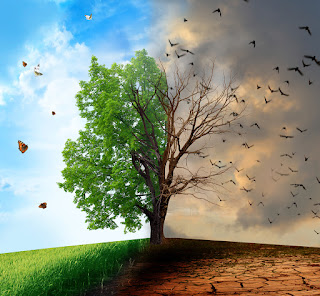During the fall and winter months, hundreds of trees will be falling in yards and on houses across America. The problem begins during hurricane season and continues through winter. Heavy snows and ice storms frequently get the best of century-old trees. The odds of your home (and you) been struck by a falling tree increase based on the age of the trees nearest your house. Here are a few other things to know and to help you in the event your house is struck by a falling tree.
Who is responsible?
If a tree falls on your house, most likely your homeowners insurance will have to pay for damages. If a tree falls in your yard and does not damage your home, most likely you will be responsible for the clean up out-of-pocket. Even if the tree was located on your neighbor's property, you could still have to make the claim on your policy, pay the deductible, and be responsible for any cost not covered by your policy. If your insurance policy is basic and for your residence only, it may not cover damage done to outbuildings, fencing, pools, or your lawn. The reverse is typically true if a tree from your yard falls on a neighbor's house. The exceptions are when the tree fell due to disease or was properly documented as being a hazard.
Identifying diseased trees
Just like people, as trees age, they become more susceptible to disease and falls. During the first 25 years of a tree's life, it should not lose a notable amount of limbs. As it gets older, limbs fall off more frequently and the size of the falling limbs increases. This is why the Arbor Day Foundation recommends having a trained arborist inspect older trees and advise on proper care. Some basic identifiers indicate a diseased tree:
Uneven growth patterns: previous damage from storms or wind can cause trees to grow lopsided and be a higher risk for falling.
Decay: Because decay often begins inside the tree, look for signs like mushrooms, fungi, and soft crumbly wood. Mistletoe is also a fungus. Its presence indicates some internal decay.
Dead wood: Occasional dead branches are normal for any mature tree. Any large branches that show signs of dryness and bark loss should be removed immediately.
Cracks: Deep splits in limbs or spots with missing bark indicate the tree's structure is failing.
Documenting a hazardous tree
Start by discussing your concern with your neighbor. It is a good idea to document your request that they remove a hazardous tree. Additionally, photos and an assessment of the situation by a tree professional may help your case in the event the problem tree does tumble. It is still possible your home insurance will have to pay for damages, but having the documentation improves the likelihood that your neighbor will have to foot the bill. It is far better than just you saying "I knew it was going to fall" after the fact.
If a tree falls on your home
Falling trees may also bring down power lines. If you are inside the home, cautiously exit the structure. The weight of the tree against your house is causing continuous pressure. The roof and other support structures do not always give way immediately. If power lines are down, call the police, power company, and then your insurance company.
Do not try to make repairs during a storm or rescue personal items. Understand that emergency services are stretched thin during inclement weather, and there are numerous other people in a similar situation. If a tree falls on your automobile, it is going to be a matter for your auto insurance and probably covered by comprehensive insurance. When it comes to falling trees, a few hundred dollars in prevention can be worth tens of thousands of dollars in repair.


No comments:
Post a Comment